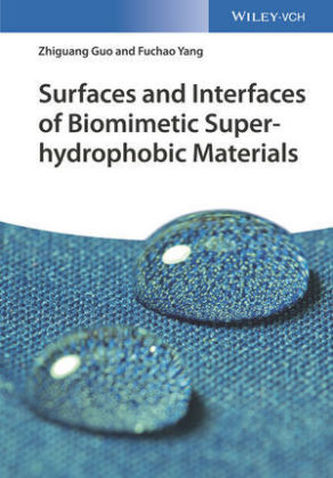1. Introduction
2. Superhydrophobic surfaces from nature
2.1 Superhydrophobic plant surfaces in nature
2.2 Superhydrophobic surfaces of animals in nature
2.3 Behind and beyond superhydrophobicity: natural hierarchical structures
3. Advances in the theory of superhydrophobic surfaces and...
prečítať celé
1. Introduction
2. Superhydrophobic surfaces from nature
2.1 Superhydrophobic plant surfaces in nature
2.2 Superhydrophobic surfaces of animals in nature
2.3 Behind and beyond superhydrophobicity: natural hierarchical structures
3. Advances in the theory of superhydrophobic surfaces and Interfaces
3.1 Basic theories: contact angle and Young's equation
3.2 Wenzel model: adaptability and limitations
3.3 Cassie-Baxter model: adaptability and limitations
3.4 Improved models
3.5 Cassie-Wenzel and Wenzel-Cassie transitions on superhydrophobic surfaces
4. Fabrications of non-coated Superhydrophobic Surfaces and Interfaces
4.1 Etching method
4.2 Lithography
4.3 Anodization
4.4 Laser processing
4.5 Electrodeposition
4.6 Hydrothermal method
4.7 Sol-gel process
4.8 Electrospinning
4.9 Others
5. Superhydrophobic nanocoatings: from materials to applications
5.1 Materials for nanocoatings
5.1.1 Inorganic materials
5.1.2 Organic materials
5.1.3 Inorganic-organic hybrid materials
5.2 Fabrication methods for nanocoatings
5.2.1 Sol-gel process5.2.3 Chemical vapor deposition
5.2.4 Spray process
5.2.5 Electrospinning process
5.2.6 Electrodeposition
5.2.7 Solution immersion process
5.2.8 Other techniques
5.3 Biomimetic transparent and superhydrophobic coatings
5.3.1 Two competitive characters: transparency and superhydrophobicity
5.3.2 Various materials for transparent and superhydrophobic surfaces
5.3.3 Potential applications
6. Adhesion Behaviors on Superhydrophobic Surfaces and Interfaces
6.1 Liquid-solid adhesion of superhydrophobic surfaces
6.1.1 Surfaces with special adhesion in nature
6.1.2 Artificial superhydrophobic surfaces with special adhesion
6.1.3 Switchable liquid-solid adhesions on superhydrophobic surfaces
6.2 Adhesion of ice on superhydrophobic surfaces
6.2.1 Mechanism of ice crystallization
6.2.2 Anti- adhesion icing properties of superhydrophobic surfaces
6.3 Solid-solid adhesion of superhydrophobic surfaces
6.3.1 Protein adsorption on superhydrophobic surfaces
6.3.2 Cell adhesion on superhydrophobic surfaces
6.3.3 Bacterial adhesions on superhydrophobic surfaces
7. Smart biomimetic superhydrophobic materials with switchable wettability
7.1 pH-responsive wettable materials
7.2 Photo-induced self-cleaning properties
7.3 Solvent-responsive wettable materials
7.4 Magnetic control behavior of superhydrophobic microspheres
7.5 Other external stimulis
8. Biomimetic Superhydrophobic Materials applied for oil/water separation (I)
8.1 Metallic mesh-based materials
8.2 Fabric-based materials
8.3 Sponge and foam-based materials
8.4 Particles and powdered materials
8.5 Other bulk materials
8.6 Theories behind oil/water separation behaviour
9. Biomimetic Superhydrophobic Materials applied for oil/water separation (II)
9.1 The formation of water-and-oil emulsions
9.2 Modified Traditional Ceramic and Polymer Separation Membranes
9.3 Novel Polymer Membranes
9.3.1 In Situ Polymerization
9.3.2 Mussel-inspired Deposition
9.3.2 Phase Inversion Process
9.4 Nanomaterial-based Membranes
9.4.1 Carbon-based
9.4.2 Cellulose-based
9.5 Non-two-dimensional Separating Methods
10. Conclusion and outlook
Skryť popis





Recenzie